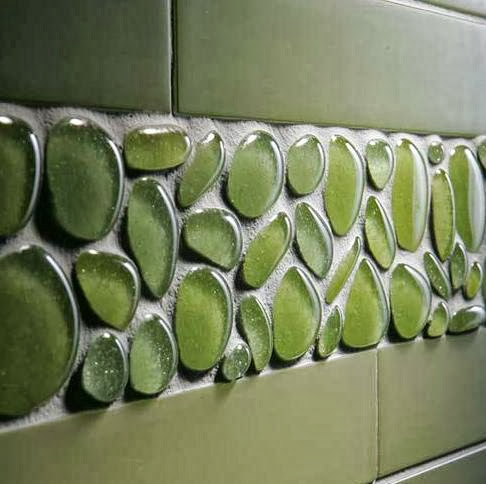Bathroom Design Ideas
A bathroom is a room for personal hygiene, generally containing a bathtub or a shower, and possibly also a bidet. In North America and some other regions, it characteristically contains a toilet and a sink; hence in North American English the word "bathroom" is commonly used to mean any room containing a toilet, even a public toilet (although in the United States this is more commonly called a restroom). In other countries, including the UK, Australia, France and Japan, homes may have a separate toilet. In Iran almost all homes have two distinct rooms for bathroom and toilet room.
The design of a bathroom must account for the use of both hot and cold water, in significant quantities, for cleaning the human body. The water is also used for moving solid and liquid human waste to a sewer or septic tank. Water may be splashed on the walls and floor, and hot humid air may cause condensation on cold surfaces. From a decorating point of view the bathroom presents a challenge. Ceiling, wall and floor materials and coverings should be impervious to water and readily and easily cleaned. The use of ceramic or glass, as well as smooth plastic materials, is common in bathrooms for their ease of cleaning. Such surfaces are often cold to the touch, however, and so water-resistant bath mats or even bathroom carpets may be used on the floor to make the room more comfortable. Alternatively, the floor may be heated, possibly by strategically placing heater conduits close to the surface.
Electrical appliances, such as lights, heaters, and heated towel rails, generally need to be installed as fixtures, with permanent connections rather than plugs and sockets. This minimises the risk of electric shock. Ground-fault circuit interrupter electrical sockets can reduce the risk of electric shock, and are required for bathroom socket installation by electrical and building codes in the United States and Canada. In some countries, such as the United Kingdom, only special sockets suitable for electric shavers are permitted in bathrooms, and are labelled as such. UK Building Regulations also define what type of electrical light fittings (i.e. how water-/splash-proof) may be installed in the areas (zones) around and above baths, sinks and showers.
Bathroom lighting should be uniform, bright and must minimise glare. For all the activities like shaving, showering, grooming etc. one must ensure equitable lighting across the entire bathroom space. The mirror area should definitely have at least two sources of light at least 1 feet apart to eliminate any shadows on the face. Skin tones and hair colour are highlighted with a tinge of yellow light.
A bathtub is a large container for holding water in which a person may bathe. Most modern bathtubs are made of acrylic or fibreglass, but alternatives are available in enamel on steel or cast iron; occasionally, waterproof finished wood. A bathtub is usually placed in a bathroom either as a stand-alone fixture or in conjunction with a shower.
Modern bathtubs have overflow and waste drains and may have taps mounted on them. They are usually built-in, but may be free-standing or sometimes sunken. Until recently, most bathtubs were roughly rectangular in shape but with the advent of acrylic thermometer baths, more shapes are becoming available. Bathtubs are commonly white in colour although many other colours can be found. The process for enamelling cast iron bathtubs was invented by the Scottish-born American David Dunbar Buick.
Two main styles of bathtub are common:
• Western style bathtubs in which the bather lies down. These baths are typically shallow and long.
• Eastern style bathtubs in which the bather stands up. These are known as four in Japan and are typically short and deep
A shower is a place in which a person bathes under a spray of water. The water is then drained through a drain in the shower base. The modern shower comes with configurable temperature and spray pressure settings, along with adjustable shower head nozzle settings. Showering is common in western culture due to efficiency of using it when compared to a bath. Its use in hygiene is therefore common practise. A shower uses less water than a bath: 80 litters on average for a shower compared to 150 litters for a bath.
Designs for shower facilities vary by location and purpose. There are free-standing showers, but also showers which are integrated into a bathtub. Showers are separated from the surrounding area through watertight curtains (shower curtain), sliding doors, or folding doors, in order to protect the space from spraying water. Showers with a level entry wet room are becoming very popular, especially due to improvements in waterproofing systems and prefabricated components.
Places such as a swimming pool, a locker room, or a military facility have multiple showers. There may be communal shower rooms without divisions, or shower stalls (typically open at the top.)
Bathroom design Ideas:-
 |
| Bathroom Glass Tiles |
 |
| big tub bathroom |






0 comments:
Post a Comment